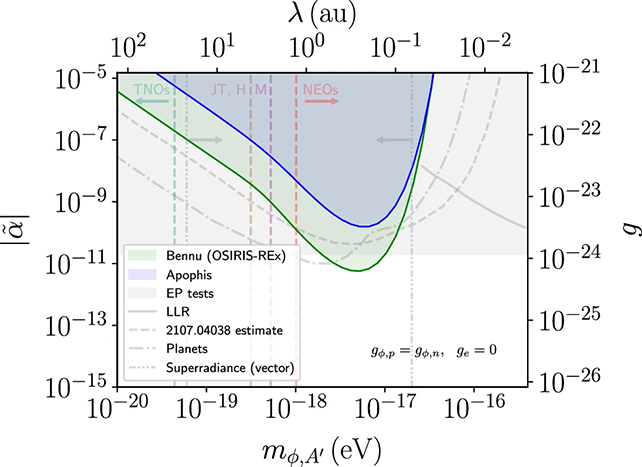Near-Earth asteroid Bennu has taught us a lot about the nature of asteroids and the history of our planet, and it's not done yet. A new study of Bennu tracking data gives us fresh clues on a potential fifth fundamental force in the Universe.
If in fact it does exist, the fifth force of nature – joining gravity, electromagnetism, and the strong and weak nuclear interactions – would go beyond the scope of our Standard Model of physics.
Scientists think the force could be carried by hypothetical ultralight particles, a proposed type of dark matter (which itself has yet to be directly detected).
According to the international team behind the study, the data obtained by the OSIRIS-REx spacecraft that visited Bennu from 2018 to 2021, coupled with measurements taken from Earth, place limits on just how massive these kinds of particles would need to be if they at all existed.

"Interpreting the data we see from tracking Bennu has the potential to add to our understanding of the theoretical underpinnings of the Universe, potentially revamping our understanding of the Standard Model of physics, gravity and dark matter," says astrophysicist Yu-Dai Tsai, from the Los Alamos National Laboratory in New Mexico.
Imagine playing pool, and watching the balls slowly sliding in one direction of their own accord – that would tell you the table was tilted, even if the tilt was too slight to see. In the same way, physicists can draw inferences about unseen forces in nature, based on how those forces are interacting with everything else.
Highly precise details captured in extensive long-term tracking of Bennu's orbit around the Sun have the potential to reveal the activity of extremely subtle effects of hypothetical forces that have been so far too subtle to measure.
One such force that emerges from string theory has been proposed as a means of modifying gravity on large scales, potentially giving rise to particles that could be suitable candidates for dark matter.
These particles would behave according to what's known as a Yukawa interaction, which suggests a new kind of field may affect orbits of large objects over long distances through subtle modifications to Newton's laws on gravity.
In this case, the researchers found that standard physics could account for Bennu's path very well.
It doesn't completely rule out a fifth force, but it does show that if it exists, its strength or its range will be below a certain level.
"The tight constraints we've achieved translate readily to some of the tightest-ever limits on Yukawa-type fifth forces," says cosmologist Sunny Vagnozzi, from the University of Trento in Italy.
"These results highlight the potential for asteroid tracking as a valuable tool in the search for ultralight bosons, dark matter and several well-motivated extensions of the Standard Model."
The search for the fifth force, and the ultralight particles that might account for the Universe's missing dark matter, goes on. While this research has failed to spot the fifth force, it does offer more evidence of how precise observations can reveal what's hidden in the Universe – and how asteroids can play an important role in that.
"The trajectories of objects often feature anomalies that can be useful in discovering new physics," says Tsai.















No comments